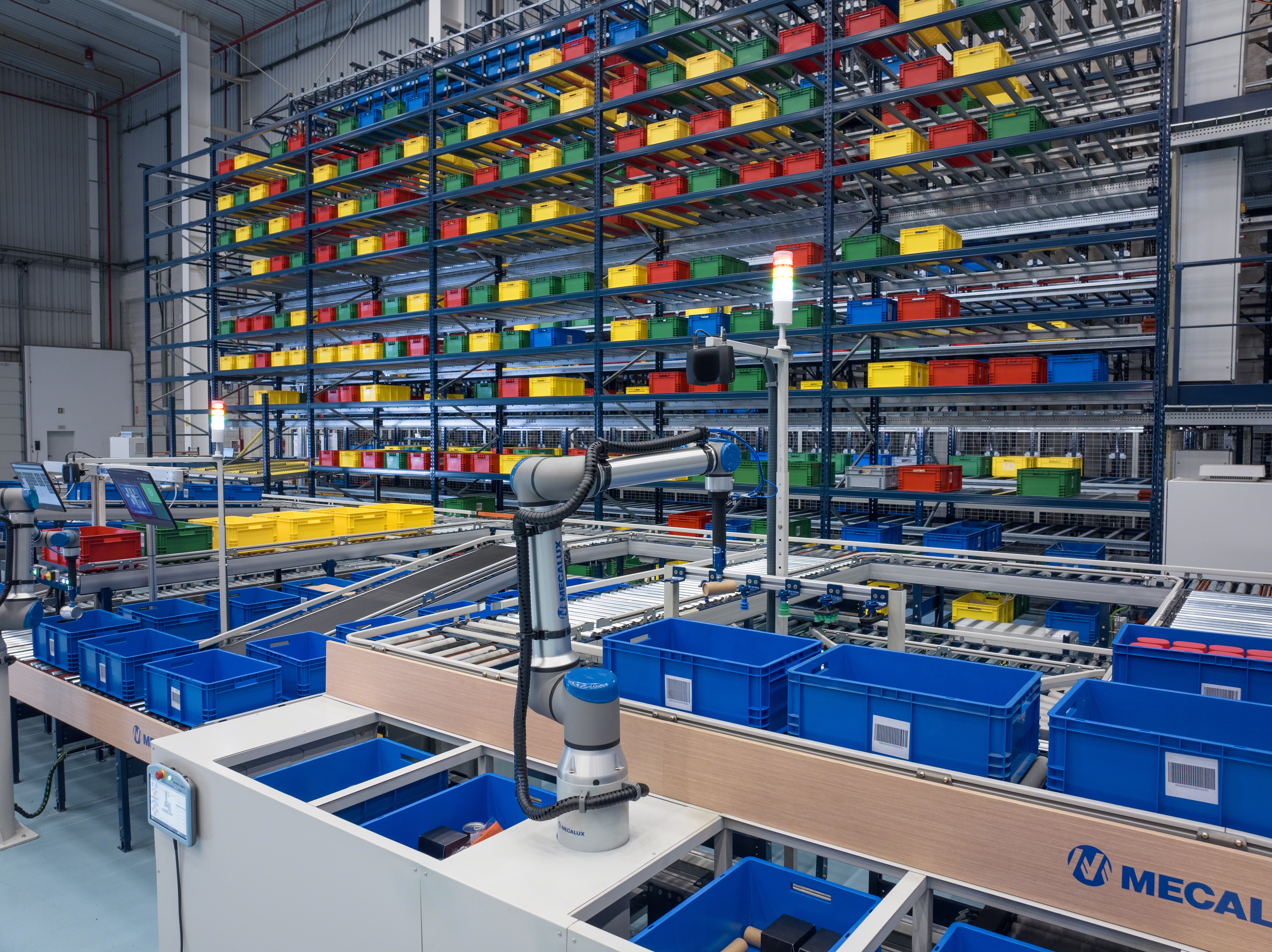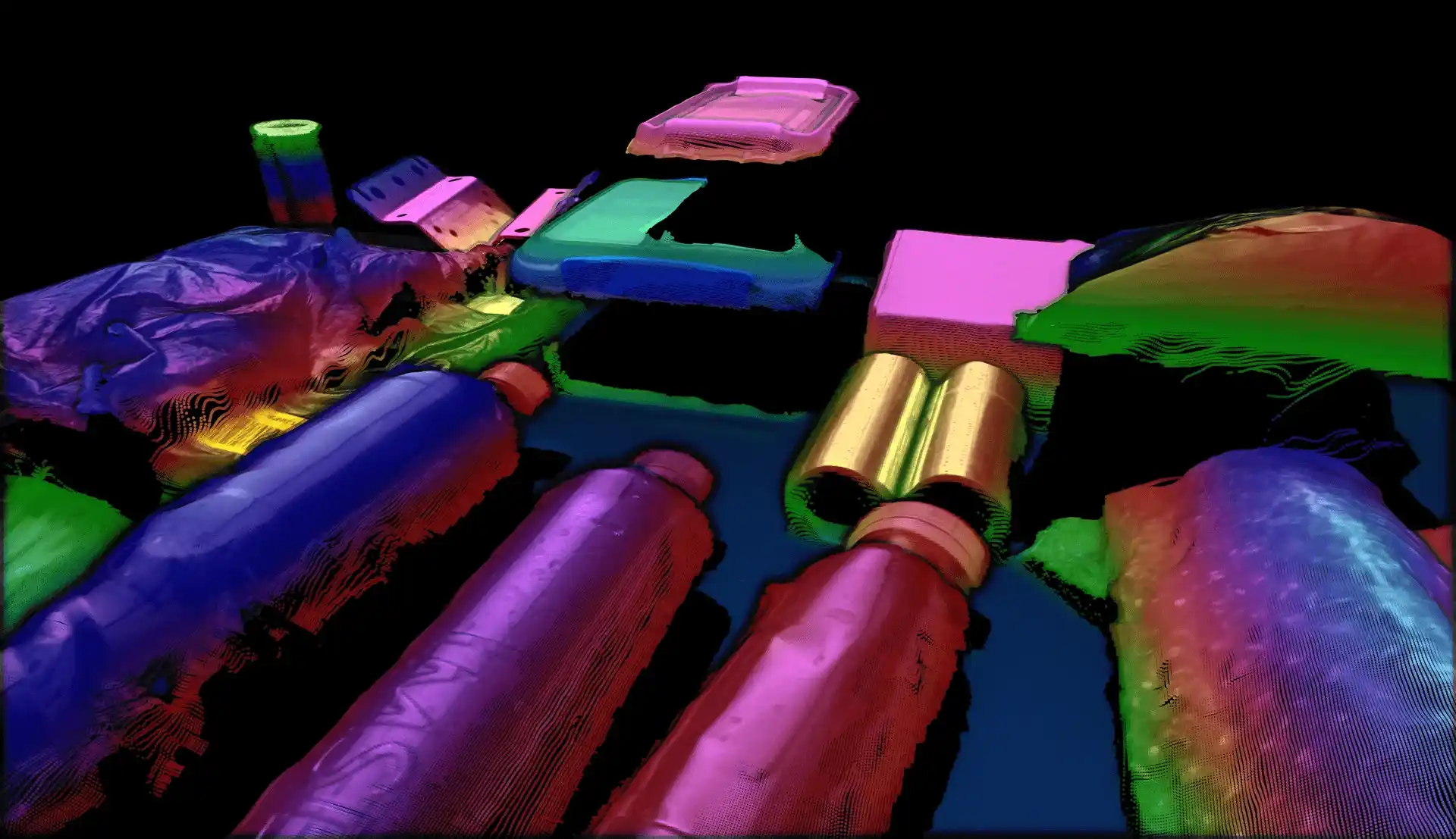Intralogistics 4.0: Machine Vision in Automated Warehouse Operations
Intralogistics 4.0 represents a significant leap forward in the way materials and products are handled within warehouses and distribution centers. By integrating advanced technologies, companies can optimize order fulfillment and enhance overall efficiency.
Table of Contents
- What Is Intralogistics
- Why We Should Care About Intralogistics
- Key Automation Processes in Intralogistics and eCommerce
- Technology in Intralogistics 4.0
- Key Considerations for Machine Vision in Intralogistics
- Real-Life Use Cases of Intralogistics 4.0
As a company that creates pure play 3D cameras for a wide range of industries, including logistics, Zivid recognizes that intralogistics has its own realm with challenges that need to be overcome. To understand how to address these challenges, we talk to our customers to learn about the processes frequently occurring in a warehouse and the technological innovations needed to perform them.
We’ve created a summary of what we’ve learned in this article, which delves into the core aspects of Intralogistics 4.0.
What Is Intralogistics?
Intralogistics refers to the management of logistics within the walls of a production or distribution facility. Unlike traditional logistics, which encompasses the broader supply chain activities, including transportation and warehousing; intralogistics focuses specifically on the internal flow of materials, goods, and information.
This includes tasks such as order picking, sorting, storing, and handling materials. Understanding what is intralogistics is crucial for optimizing internal processes and achieving seamless operations.
Why Should We Care About Intralogistics?
Managing inventories that can encompass tens of thousands of different items, or even millions in the case of eCommerce is a vital and complex task. Recognizing, sorting, and handling this vast range of products, along with their different materials and packaging, is a significant challenge of warehouse streamlining.

This is where high-quality 3D vision and AI become indispensable. New technologies enable precise identification and handling of a larger variety of items, reducing errors and allowing humans to focus on more meaningful operations.
Key Automation Processes in Intralogistics and eCommerce
Intralogistics involves several recurring processes crucial for the smooth operation of warehouses and distribution centers.
The rise of eCommerce has further highlighted the importance of efficient intralogistics. Rapid order fulfillment and accurate delivery are now expected and essential, making advanced intralogistics processes indispensable.
- Storage and Warehousing
This process involves storing and managing goods within a designated facility until they are needed for distribution or sale. Warehouses provide a secure and semi-controlled environment, with products organized on pallets, shelves, or in bins, depending on their characteristics. - Order Picking (or Piece Picking)
The core activity of fulfilling orders, where items are carefully retrieved from storage to complete customer requests. Efficient order fulfillment is a competitive advantage in the fast-paced world of online shopping. In intralogistics, this step is when the items are moved to be packaged and prepared for leaving the warehouse, often into a new order tote or the final box for shipping. - Distribution
Warehouses serve as crucial hubs in the supply chain, facilitating the timely and cost-effective distribution of goods. Products are received, sorted, and prepared for shipment to retailers, wholesalers, or directly to consumers. - Value-Added Services
Warehouses often provide additional services such as labeling, packaging, and combining multiple items into a single package. These services enhance the value of the products and improve customer satisfaction. - Inventory Management
Keeping track of inventory levels is crucial. Warehouses use technologies like barcoding and inventory management software to monitor stock, manage reorder points, and ensure inventory accuracy, preventing overstocking and stockouts.
Technology in Intralogistics 4.0
For these processes to not only function day-to-day but also to achieve high levels of efficiency and productivity, advanced technologies play a crucial role. We are now at the forefront of a wide range of technology that is enabling a higher level of digitalization of warehouses and automation. The technologies that are listed below are examples of key points of innovation in the industry.
Machine Learning and AI
Machine Learning and Artificial Intelligence (AI) are at the heart of Intralogistics 4.0. These technologies analyze vast amounts of data to optimize various processes, such as optimizing route planning for piece picking, detection, and object picking thus speeding up the process. AI algorithms can also enhance decision-making by identifying patterns and insights that human operators might miss, leading to smarter and more efficient operations.
Digital Twins
Digital twins are virtual replicas of physical systems, used to simulate and analyze real-world processes in a digital environment. In intralogistics, digital twins enable warehouse managers to visualize and optimize the layout, monitor equipment performance, and test different scenarios without disrupting actual operations.
Piece Picking Robots
Piece picking robots are designed to automate the picking process by accurately selecting individual items from a storage location and placing them into the appropriate containers for shipping. These robots usually use advanced vision software and 3D cameras, to help them identify and handle items with precision.
Automated Guided Vehicles (AGVs)
Automated Guided Vehicles (AGVs) are mobile robots that transport goods within a warehouse without human intervention. AGVs follow predetermined paths and can be used for various tasks, such as transporting pallets, cartons, and other materials. They are equipped with sensors and navigation systems to avoid obstacles and ensure safe operation.

Industrial Machine Vision
Machine vision systems use advanced imaging technologies to capture detailed visual information about the warehouse environment. This data is essential for creating accurate digital twins, enabling real-time monitoring and optimization of warehouse operations.
In AGVs, machine vision allows for precise navigation and obstacle detection, ensuring the safe and efficient movement of goods. For piece-picking robots, machine vision provides the necessary accuracy to identify, locate, and handle items, ensuring high picking speeds and minimizing errors.
Key Considerations for Machine Vision in Intralogistics
Machine vision plays a pivotal role in Intralogistics 4.0. When implementing these systems, consider the following:
- Accuracy: Dimensional trueness is a big part of accuracy because if a gripper misses an item it can easily tear it or break it. Look for a highly accurate 3D camera with low trueness error and make sure it is low even outside of laboratory tests.
- Point Cloud Coverage and Quality: In order fulfillment, there is no limit to the types of items that must be processed. Find a machine vision system that creates point clouds with low contrast distortions and covers a wide range of materials (shiny, transparent, and black)
- Flexibility and FOV: Look for machine vision systems that can cover a wide working range and can easily be integrated into a piece-picking cell. When it comes to the flexibility, there are two routes you could go. While robot-mounted cameras with wide FOV are beneficial because they offer 360° range flexibility, opting for a stationary camera with a narrower FOV (but a wider working range) might reduce the cycle times, as the robot doesn't have to make as many movements. Some piece-picking cells, use two 3D cameras with different working ranges.
- Reliability: Opt for high-quality systems to minimize downtime and maintenance. Look for longer lifetime, reliability scores outside of the lab, results that do not fluctuate with temperature change, robust against ambient light variations, and durability even during vibration exposure.
At Zivid, our industrial 3D cameras are designed to meet these demands, providing unparalleled precision and reliability for all your intralogistics needs. By leveraging our technology, you can optimize your order-picking processes and stay ahead in the competitive landscape of modern intralogistics.
Real-Life Use Cases of Intralogistics 4.0
Several of our customers have successfully embraced Intralogistics 4.0, achieving remarkable improvements in their operations.
Siemens’ SIMATIC Robot Pick AI
Siemens developed a solution that directly addresses the persistent challenges of intra-logistics fulfillment. Using Universal Robots’ robot arms and Zivid’s 3D vision technology, SIMATIC Robot Pick AI is bringing speed into piece picking.
Modern fulfillment centers require the automated transport of large quantities and a wide variety of stock-keeping units (SKUs). The new solution offers the industry a reliable and effective method for picking items regardless of their shape, size, opacity, or transparency.
The solution integrates the latest cutting-edge technologies:
- Siemens' SIMATIC Robot Pick AI: A pre-trained, deep learning-based vision software that enables robots to perform tasks previously restricted to manual intervention.
- Universal Robots' UR20: With its extended reach and compact design, this robot facilitates the automation of applications requiring the lifting of heavy objects over longer distances, all while maintaining UR's stringent safety standards. The solution is compatible across the entire UR cobot family.
- Zivid's 2+ M130 Camera: The first 3D sensor capable of imaging everything, including transparent and translucent items, enhancing the accessibility and pickability for e-commerce and fulfillment applications.
Comau's MI.RA / OnePicker
Comau's MI.RA/OnePicker is designed to autonomously pick various objects from the same bin without needing CAD-based assistance or prior information about their size, shape, color, or characteristics.
This AI-backed solution uses advanced vision technology and sensors to detect and locate randomly placed objects, determining the most effective way to empty the bin.
As transparency was one of the main concerns, Comau picked Zivid 2+ as their 3D camera of choice because of the OmniEngine vision technology – patented technology for capturing transparency.
Let's Sum It Up: Intralogistics 4.0 Relies on the Machine Vision Quality
Intralogistics 4.0 marks a transformative era in warehouse operations, driven by the integration of advanced technologies. As we've explored, the essence of Intralogistics 4.0 lies in its ability to optimize internal logistics processes through automation and digitalization.
From our perspective, at the heart of this transformation is machine vision technology. High-quality machine vision systems help robots achieve the precision and efficiency required in modern warehouses.
As illustrated by the real-life use cases from Siemens and Comau, advanced vision systems like Zivid's 3D cameras are instrumental in overcoming the complexities of diverse and unpredictable warehouse environments.
You May Also Like
These Related Stories

How to Improve Order Fulfillment Processes

Robotic Applications Benefiting from A 3D Camera That Also Reads Barcodes





%20(LinkedIn%20Single%20Image%20Ad)%20(600%20%C3%97%20700px)%20(LinkedIn%20Post).png?width=397&height=397&name=Free%20eBook%20(1080%20%C3%97%20900px)%20(LinkedIn%20Single%20Image%20Ad)%20(600%20%C3%97%20700px)%20(LinkedIn%20Post).png)
.png?width=1080&height=1080&name=FREE%20DEMO%20(1).png)